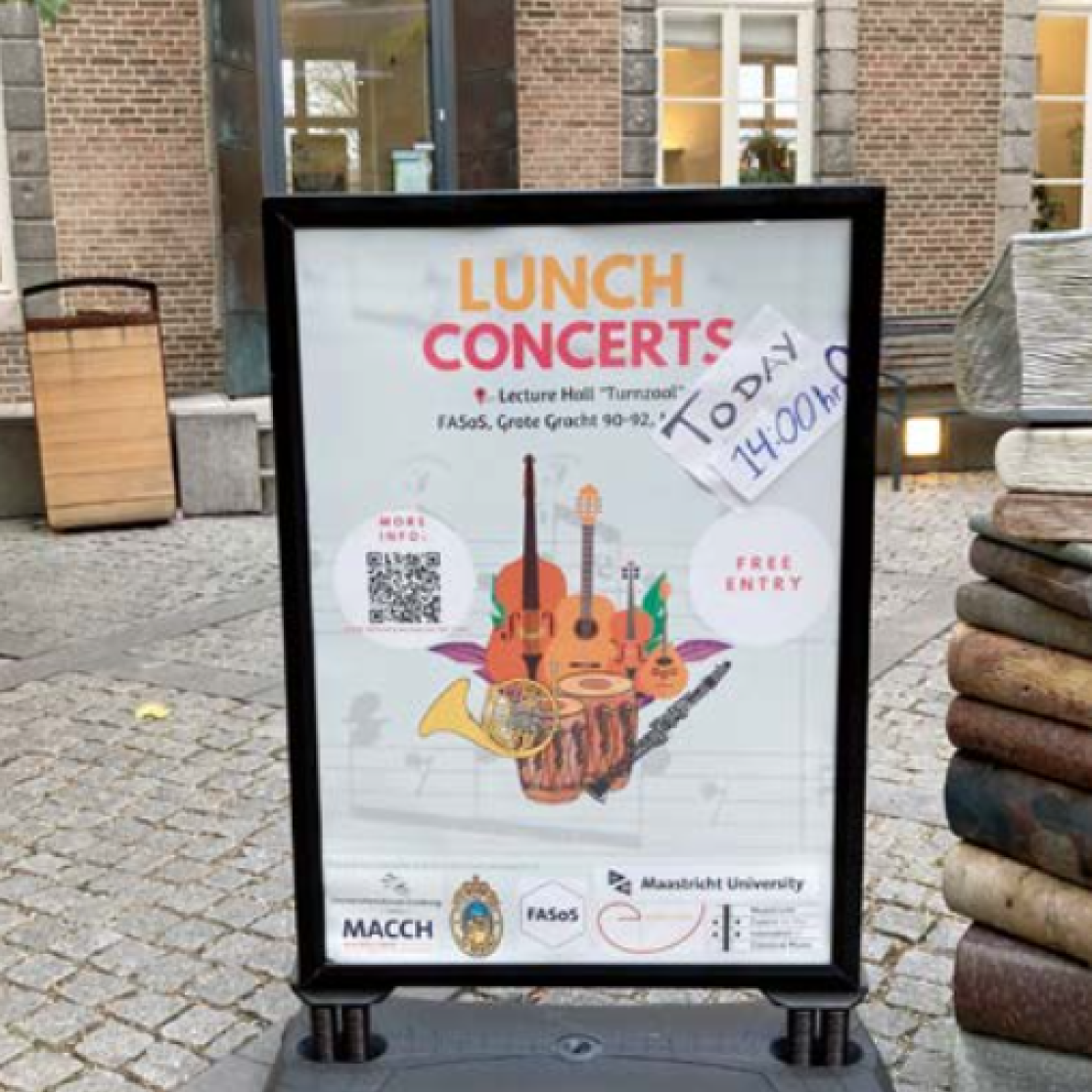Research in the workplace
The gymnasium of the Hof van Tilly in Maastricht is the oldest in the Netherlands. Where once there were rings and gymnastics equipment, lectures are now given to students from the Faculty of Arts and Social Sciences. One of them studied viola at the Maastricht Conservatory. Daniel Rivera came up with the idea of organizing lunch concerts. Since September last year (2022), conservatory students have been playing a half-hour program every month. And so the gym took on a new guise, that of a concert hall. During the concert in February, parts from string quartets by Beethoven, Mendelssohn and Webern were played by the Doré Quartet. More and more students, teachers, but also local residents are finding their way to the concerts. This time they sit in a circle around the string quartet and experience that the acoustics in the former gymnasium are ideally suited for classical music. Afterwards they receive a questionnaire. Daniel explains that he not only organizes concerts, but also conducts research into innovative concert practices. He wants to know how the audience experienced the setup.
The MCICM is a unique collaboration between an orchestra, a conservatory and a university. In recent years, this collaboration has taken shape in academic research by PhD students and postdoctoral researchers, in experimental projects and in international publications and symposia. But the lunch concerts and questionnaires show that the research also takes place on the work floor, almost casually, in the midst of everyday activity. Two other examples.
The Maastricht Conservatory is working on renewing its classical music and jazz training. While the emphasis traditionally lies on the main subject and students and teachers strive for excellent mastery of the instrument, the changing professional practice also requires the development of other skills. The practice of the South Netherlands Philharmonic is an inspiration. There people are considering changes to the selection procedure when hiring new musicians. Traditionally, musical skills are central to this, as well as the social ability to integrate within the orchestra. The question for the orchestra is whether other competencies should not be linked to this.
Orchestra and university work together because students do an internship at the South Netherlands Philharmonic or write a thesis about it. It is especially important for students who are preparing for a career in practice to be able to take a look behind the scenes. This happens, for example, during the concert De Verhalententoonstelling (The Story Exhibition), where not only music but also the stories about that music can be heard. Students from the Master's program in Art and Heritage conduct public research there. The distance between lecture hall and concert hall has become slightly smaller again.
Peter Peters
Director, MCICM
